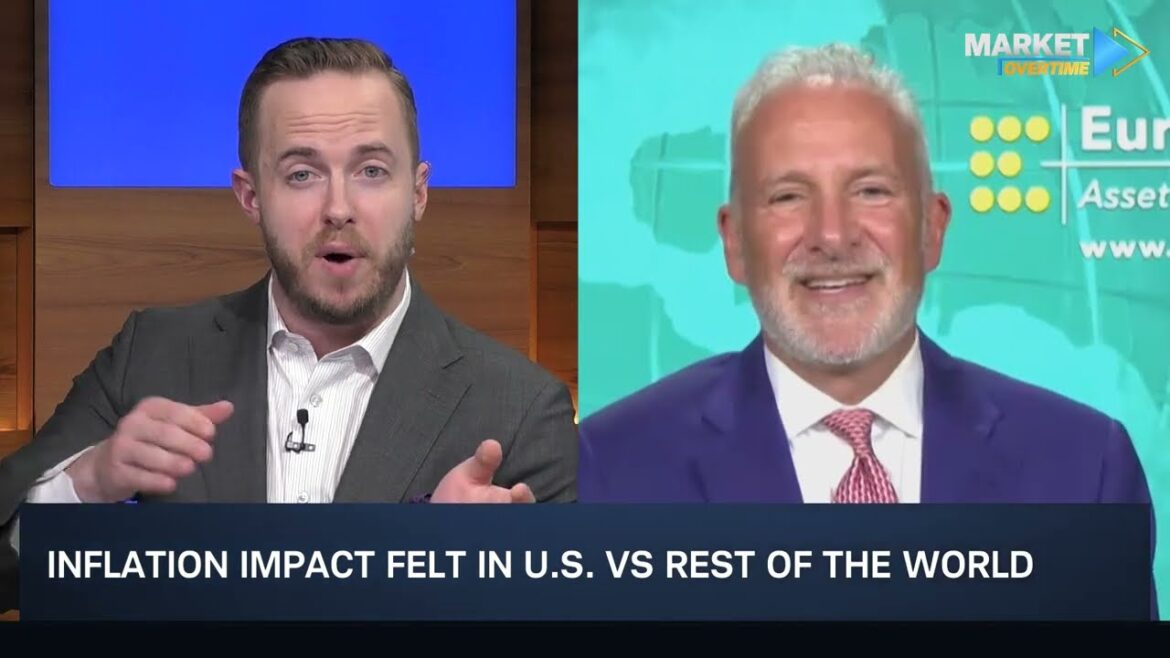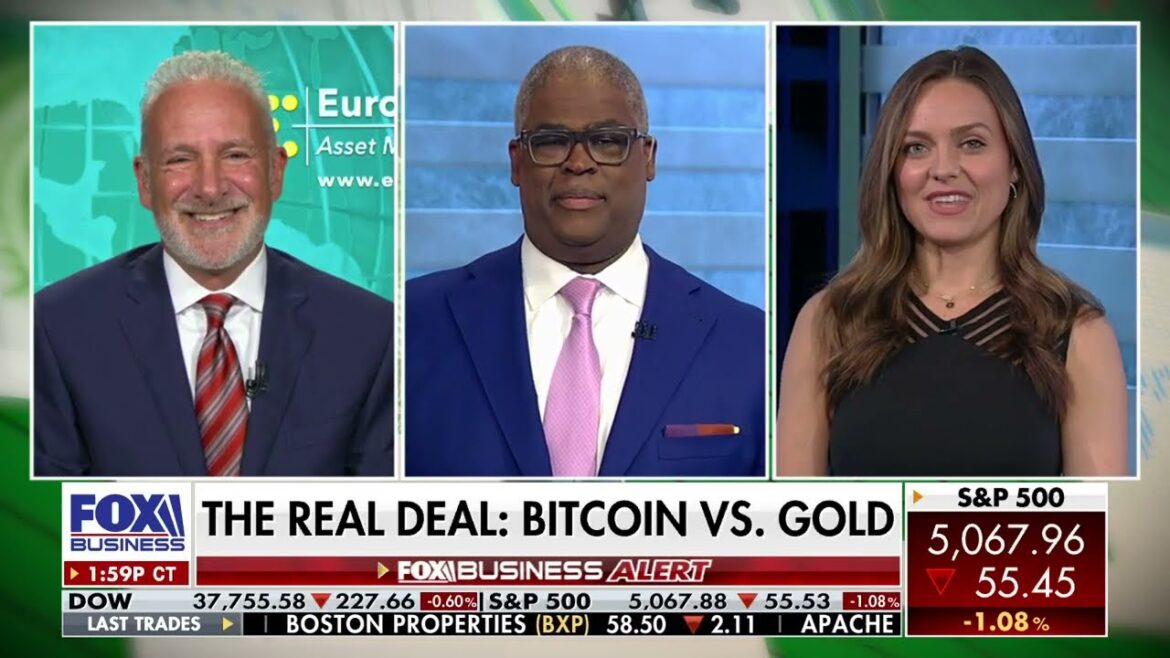Gold has all the potential to go unprecedentedly high. But silver will be gold on
Site:
Precious metals news
As the Union and Confederate armies faced off during the Civil War, an equally fierce economic battle waged behind the scenes, ultimately deciding the war's fate.
Gold is up, influenced by macroeconomic uncertainty, including tensions in the Middle East and the Federal Reserve’s stalled inflation measures. Despite this, gold is perceived as the most overvalued since August 2020, according to a Bank of America Fund Manager Survey. Although a net 26% of respondents believe gold has over-appreciated, there is still optimism, with projections suggesting a potential 25% to 50% increase in value over the next few years. However, 78% of fund managers see a global recession as unlikely within the next year, reflecting a more optimistic economic outlook compared to market behavior.
Nine people have been charged in connection with the largest gold heist in Canadian history, which occurred at Toronto’s Pearson International Airport last year. Peel Regional Police reported that 6,600 gold bars, valued over 20 million Canadian dollars, along with 2.5 million in various foreign currencies, were stolen. The stolen gold was later melted down and used to buy illegal firearms. Among those charged are an Air Canada warehouse employee and a former manager, who even guided the police on a tour of the cargo facility post-theft.
In a recent interview with CNBC, Pierre-Olivier Gourinchas, the International Monetary Fund's economic counselor, assessed the risk of a global recession as "fairly minimal." He highlighted several positive factors, such as robust economic performance in the U.S. and various emerging markets, and a quicker-than-anticipated decrease in inflation, despite some growth sluggishness in Europe. However, he cautioned that increasing tensions in the Middle East could pose risks to global economic stability.
Apr 17, 2024 - 14:31:55 EDT
The article highlights the intense activity in China's gold markets, particularly at the Hualin International Jewelry Market in Guangzhou, amid a surge in gold prices. As traditional investment options like stocks, property, and banking lose their appeal due to increased uncertainty, gold has become a popular safe haven for investors. This shift has brought an influx of buyers, including many from China's middle class and younger demographics, and has led to a significant rise in the number of gold stores within the market.
Peter recently appeared on Market Overtime with Oliver Renick for an interview. In their wide-ranging discussion, Peter speaks on monetary policy, the reliability of inflation data, and reasons to avoid Bitcoin.
In basketball, a "heat check" is when a player, emboldened by a series of successful shots, opts for a challenging attempt to gauge the persistence of their scoring spree. Today, we'll do our own financial "heat check" in the precious metals market, to assess whether the recent upward trend is set to continue.
Peter recently appeared on Fox Business to discuss Bitcoin’s recent performance. In this segment, he takes on Natalie Brunell, host of the podcast Coin Stories, in a friendly debate on the merits of crypto and precious metals.
Gold prices have remained stable near record highs despite the Federal Reserve Chair Jerome Powell's recent remarks suggesting that interest rates may be maintained for a prolonged period. This year, gold has appreciated by about 15%, bolstered by safe-haven demands due to escalating geopolitical tensions in the Middle East and Ukraine. Even though rising Treasury yields and a stronger dollar typically undermine gold's attractiveness, the metal has continued its upward trend, surprising many observers. This resilience is supported by significant central bank purchases and growing demand from Chinese consumers. As of the latest trading session in London, spot gold was priced at $2,382.40 per ounce, nearing its peak of $2,431.52.
Gold prices have held steady near record levels this year, gaining about 15% amidst ongoing geopolitical tensions in the Middle East and Ukraine. Despite a recent statement by Federal Reserve Chairman Jerome Powell indicating that interest rates might remain higher for an extended period due to persistent inflation, gold continues to attract safe-haven investments. This resilience comes even as Treasury yields and the dollar have risen, which typically dampens gold's appeal. The metal's sustained uptrend, in the face of higher borrowing costs and a stronger dollar, has caught the attention of market analysts.
Dominic Schnider, head of global commodities and foreign exchange at UBS Global Wealth Management, discusses the prospects for commodities including copper, gold and silver. He speaks on "Bloomberg: The China Show." Source: Bloomberg
 Investors Flock to Gold as Middle East Tensions Escalate, Dollar Tumbles
Investors Flock to Gold as Middle East Tensions Escalate, Dollar TumblesApr 17, 2024 - 08:42:38 EDT
Gold prices saw an increase on Wednesday, nearly touching their all-time highs, due to escalating tensions in the Middle East and a weakening U.S. dollar. The price of spot gold ascended by 0.2% to $2,388.56 per ounce, approaching its historical peak of $2,431.29. Conversely, U.S. gold futures experienced a slight decline of 0.1%, settling at $2,404.90. The rise in gold prices reflects investor sentiment seeking security amid growing geopolitical concerns, despite being technically overbought. Lukman Otunuga, a senior research analyst at FXTM, highlighted that the geopolitical instability is currently more influential on market dynamics than economic data or monetary policy expectations.
Apr 16, 2024 - 17:04:55 EDT
For 446 days, the bond market's yield curve inversion, often seen as a recession predictor, has not resulted in an economic downturn. Historically, a normal yield curve shows higher long-term rates compared to short-term ones, indicating economic optimism. However, since July 5, 2022, the 2-year Treasury yield has consistently exceeded the 10-year rate, primarily due to aggressive Federal Reserve rate hikes aimed at curbing inflation. This condition matches the length of a similar inversion from 1978 to 1980 but has yet to lead to the anticipated recession.
 Debt Service Costs Threaten Sustainable Development in Developing Countries
Debt Service Costs Threaten Sustainable Development in Developing CountriesApr 16, 2024 - 16:52:39 EDT
Emerging nations are facing a severe financial dilemma as they contend with record-high external debt service costs of $400 billion this year. A recent report by the Debt Relief for Green and Inclusive Recovery Project (DRGR) highlights that 47 developing countries risk insolvency if they pursue necessary investments in climate adaptation and sustainable development to meet the 2030 Agenda and Paris Agreement objectives. This risk arises as these investments would push them beyond the external debt insolvency thresholds set by the International Monetary Fund (IMF), particularly over the next five years.
 Renewed Geopolitical Tensions and US Inflation Spike Reignite Currency Market Volatility
Renewed Geopolitical Tensions and US Inflation Spike Reignite Currency Market VolatilityApr 16, 2024 - 16:36:15 EDT
Currency market volatility is on the rise, driven by increased geopolitical tensions in the Middle East and heightened inflation in the US. The recent attack by Iran on Israel and strong US inflation figures have led traders to speculate that the US dollar will strengthen, anticipating that the Federal Reserve might maintain stringent monetary policies longer than previously expected. This shift marks a significant change from just a month ago, when volatility was at multi-year lows, prompting speculation about a new era of stability in the $7.5 trillion-a-day foreign exchange market.
In March, China's gold market witnessed diverse trends: official reserves increased, while wholesale demand slightly decreased. The Shanghai Gold Benchmark PM price surged by 10%, significantly outperforming other local asset classes. Although there was a mild drop in gold leaving the Shanghai Gold Exchange due to high prices, the first quarter saw the highest wholesale gold demand since 2019. The premium on China’s gold prices declined in March, indicating softer local demand; however, the quarter overall experienced the highest Q1 premium on record, driven by strong physical demand in earlier months.
 Silver's 44 Year Cup & Handle "Now, I Believe MID TO HIGH Triple Digits Are Baked in the Cake"
Silver's 44 Year Cup & Handle "Now, I Believe MID TO HIGH Triple Digits Are Baked in the Cake"Apr 16, 2024 - 15:40:38 EDT
Dive into an epic financial adventure as we traverse through decades of silver pricing history, exploring striking chart patterns and bold predictions
The outlook for gold prices remains broadly positive, yet caution is warranted. Currently, gold is exhibiting an unusual correlation with the US dollar and both 5-year and 10-year US real yields—a relationship typically transient and lasting only about 3 to 6 months. Should gold prices align once more with central bank movements, stability against the US dollar and a modest rise against the euro are expected, reflecting divergent Federal Reserve and European Central Bank policies. Despite these trends, the current supply of physical gold is adequate, and central bank purchasing levels do not fully support the high market prices. Consequently, the forecast for gold remains pegged at $2,000 per ounce by year-end.
Deutsche Bank has increased its gold price forecast to $2,600 by the end of 2024. This follows a similar bullish adjustment by Goldman Sachs, who now expects gold to reach $2,700 per ounce. Both banks attribute their optimistic forecasts to substantial investment inflows and rising geopolitical tensions, particularly citing the Middle East conflict as reinforcing gold's appeal as a safe haven. The recent failed missile attack by Iran on Israel further boosts this sentiment. Deutsche Bank also notes that while some early investors might take profits, new investors are likely to enter the market, sustaining demand and supporting higher prices. This sentiment has contributed to a 20% increase in gold prices over the past two months, with expectations for continued upward movement.
 Powell Warns of Extended High Interest Rates in Face of Persistent Inflation
Powell Warns of Extended High Interest Rates in Face of Persistent InflationApr 16, 2024 - 14:19:14 EDT
Federal Reserve Chair Jerome Powell has moderated expectations for interest rate cuts, citing persistently firm inflation figures in the first quarter that have introduced uncertainty about the Fed's ability to lower rates without economic deceleration. Powell highlighted a notable shift in the Fed’s stance after inflation readings consistently exceeded forecasts for three consecutive months, undermining earlier hopes for pre-emptive rate reductions. Despite previous optimism that a few more months of data could reaffirm their inflation targets, recent trends suggest a longer-than-anticipated timeframe to gain this confidence.








